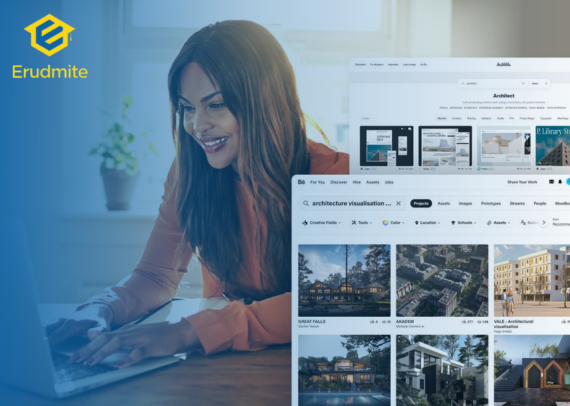
In today’s digital-first world, your portfolio is often the first impression you make on employers, clients, or collaborators. Whether you’re a student, freelancer, or professional, having an online portfolio helps you showcase your skills, projects, and achievements in one place. But what if you don’t have design experience? The good news is, building a professional portfolio no longer requires coding or graphic design skills. With the right tools, you can create a sleek, impactful portfolio that highlights your work beautifully.
Below, we’ll explore five easy-to-use tools that let anyone build an online portfolio without needing design expertise.
1. Canva – Templates Made Simple
Canva is best known for its design capabilities, but it also offers portfolio website templates that make the process straightforward. You don’t need to worry about layouts, color schemes, or typography—everything comes pre-designed.
Why Canva Works:
- Hundreds of customizable templates.
- Drag-and-drop interface for adding images, text, and videos.
- Option to host your portfolio directly on Canva or export it as a PDF for offline use.
This is ideal for students or freelancers who want a quick and visually appealing portfolio to share with potential employers. Canva even allows you to create consistent branding across resumes, cover letters, and social media profiles, giving your portfolio a professional touch.
2. Wix – Website Building Without the Stress
Wix is one of the most popular website builders worldwide, and for good reason. It offers a beginner-friendly platform with templates specifically designed for portfolios. With Wix, you don’t need to understand code or complex web design tools; you simply customize pre-built designs.
Key Features:
- Portfolio-specific templates (for photographers, designers, writers, etc.).
- Intuitive drag-and-drop functionality.
- Free hosting, with the option to upgrade for a custom domain.
What sets Wix apart is its flexibility. Whether you want a one-page portfolio or a multi-section site with blogs, testimonials, and contact forms, Wix has the features to make it happen—without technical headaches.
3. Behance – The Creative Showcase Platform
If you’re in a creative field like graphic design, writing, or photography, Behance by Adobe is a must-consider platform. Instead of building a standalone website, Behance lets you upload and organize your work into projects that live on their global creative community.
Benefits of Behance:
- Exposure to a global audience of recruiters and creatives.
- Built-in community for networking and inspiration.
- Seamless integration with Adobe Creative Cloud for easy uploads.
The best part? You don’t need to design layouts at all. Behance standardizes the presentation, ensuring your projects look professional. It’s particularly helpful for students or freelancers who want to get noticed by industry professionals without investing in a personal website just yet.
4. Portfoliobox – Made for Portfolios
Portfoliobox is an online tool created specifically for building professional portfolios. Unlike general website builders, it caters to artists, photographers, writers, and consultants who want a clean showcase for their work.
What Makes Portfoliobox Stand Out:
- Easy customization with no coding required.
- Professionally designed templates tailored for portfolios.
- Free version available, with affordable upgrades for custom domains.
Because it’s designed with portfolios in mind, Portfoliobox makes it simple to highlight your projects, bio, and contact information in a cohesive way. For anyone wanting a straightforward portfolio tool that looks polished, this is a solid choice.
5. LinkedIn – The Overlooked Portfolio Option
While most people think of LinkedIn as just a job-searching platform, it can also function as an online portfolio. You can showcase projects, upload work samples, and even add multimedia (like presentations, videos, or case studies) to your profile.
Why LinkedIn Works as a Portfolio:
- Built-in professional audience of recruiters, employers, and industry peers.
- Easy to update with new achievements and projects.
- Combines your resume, skills, and portfolio in one place.
For students or professionals who don’t want to manage a separate website, LinkedIn is a no-brainer. It not only highlights your work but also positions you directly in front of decision-makers in your industry.
Final Thoughts
Building an online portfolio no longer requires graphic design or coding skills. Thanks to tools like Canva, Wix, Behance, Portfoliobox, and even LinkedIn, anyone can create a professional showcase of their work in just a few hours.
The best part is that each of these tools is beginner-friendly and either free or affordable. The only real requirement is your willingness to collect your best work, organize it thoughtfully, and present it with confidence.
So, whether you’re a student applying for your first internship, a freelancer trying to attract new clients, or a professional aiming for your next career move, don’t delay creating your online portfolio. With these tools, you’re only a few clicks away from making a lasting impression.






